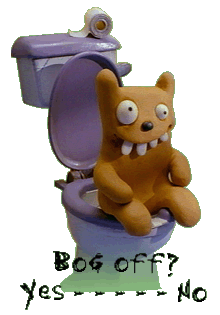Unit 32: Stop Motion Animation Production
NQF Level 3: BTEC National
Guided learning hours: 60
Unit abstract
Stop motion animation involves developing creative ideas for character, setting and
storyline which will engage the chosen audience.
Animation has become an increasingly important media form and examples can be
seen in formats as different as advertising, feature films, mobile phone content, the
internet and television.
The industry includes both large and small production companies working on stop
motion animation projects using a range of formats and for a variety of purposes.
Animation on all scales requires people with fresh, exciting ideas for new work,
whilst larger companies will also need individuals with specialist skills, such as model
makers, or the evidence to prove that they can develop them.
This unit gives learners the opportunity to develop their competence in all stages of
the stop motion animation process. Learners will be encouraged to experiment with
both content and technique.
The unit focuses on developing learners’ skills in the production of stop motion
animations using traditional frame-by-frame methods to animate 3D material: objects,
puppets, clay figures and other models (the term ‘model’ being used in this unit to
include the objects, puppets or figures used as character in a stop motion animation).
Learners will work on design, character, setting and narrative whilst also developing
a range of production techniques. Point of view, lighting and movement, such as
walking and lip synching are key issues in this unit.
As essential background, learners need to research the content and production
techniques used in both historical and contemporary examples of work, and to
understand such things as persistence of vision, frame rates, stop-frame techniques,
model making and sets.
As they follow the unit, learners will increasingly recognise the need to keep their
intended audience constantly in mind, and to take into account at all stages the role
of animation as communication. To encourage this recognition their animation work
will be exhibited to audiences after completion and audience responses evaluated.
Learning outcomes
On completion of this unit a learner should:
1 Understand techniques and styles used in stop motion animation
Techniques: persistence of vision; stop-frame; frame rates
Origins of the moving image: pioneers and techniques eg Joseph Plateau
(phenakitoscope), William Horner (zoetrope), Emile Reynaud (praxinoscope),
Edward Muybridge, Edison (kinetoscope), Lumière brothers, George Pal
Contemporary sources: music videos; advertising; feature films; TV programmes;
digital exhibition of animation eg mobile phones, internet
2 Be able to plan a stop motion animation with soundtrack
Use of possible formats: eg stop-frame techniques, time lapse photography,
plasticine animation, claymation, using found objects, modelling, puppetry,
combined formats
Generation of ideas; visualisation; characters; backgrounds; storylines; audio;
working within technical limitations
Consideration of audience appeal: definition of audience, eg by age, by gender,
by interests; taste; viewing context
Planning: drawings; storyboarding; consideration of movement; continuity;
frames per second; perspective; soundtrack design; point of view;
set/background; lighting: colour
3 Be able to produce a stop motion animation using traditional or digital methods
Components of production: format; narrative; music; special effects; cuts;
transitions; timing; frame numbers; dope sheets
Construction elements: character; models; lighting; set, eg three wall set, blue
screen, location; props; movement, eg walking, lip synching, expression, securing
puppets to set, flying a puppet
Camera: framing; access to set; angle; movement; lighting; appropriate point of
view; focus; perspective
Post-production editing: adding visual effects; compositing different elements
into one shot; removing rigs
Post-production audio: soundtrack; dialogue; synchronisation; levels scanning;
use of editing software; key frames
4 Understand how to evaluate audience responses
Showing work to audiences: screenings; festivals; websites
Collecting audience responses: discussions; questionnaires; reviews; focus groups;
feedback from online exhibition
Audience responses to: genre; content; style; narrative; character; techniques;
technical qualities; aesthetic qualities; creative qualities
Reporting findings: oral presentation; written report; action plan; review
Essential resources
Access to a rostrum camera, an animation table and lighting will be required, as well
as camera equipment capable of frame capture and remote shutter control. Many DV
cameras come with animation modes and whilst some of these are less than frame
accurate, their use can be combined with existing video editing applications.
Construction space will be required to enable learners to make sets or models, as
well as sufficient studio space for a number of sets to be in place over the period of
an assignment.
Recording, editing and post-production facilities for sound will be required.
Libraries should have DVD resources as well as relevant and current information on
animation, filming techniques and digital animation and contemporary film makers.
Indicative reading for learners
- Beck J — Outlaw Animation: Cutting-edge Cartoons from the Spike and Mike Festivals (Harry N Abrams, 2003)
- Culhane S — Animation: From Script to Screen (Columbus Books, 1989)
- Grant J — Masters of Animation (Watson Guptill Publications Inc, 2001)
- Hart C — How to Draw Animation: Learn the Art of Animation from Character Design to Story Boards and Layouts (Watson Guptill Publications Inc, 1997)
- Noake R — Animation: A Guide to Animated Film Techniques (McDonald and Co, 1988)
- Shaw S — Stop Motion: Craft Skills for Model Animation (Focal Press 2003)
- Taylor R — Encyclopaedia of Animation Techniques (Focal Press, 2002)
- Wells P — Understanding Animation (Routledge, 1998)
- White T — The Animator’s Workbook (Watson Guptill Publications Inc, 1988)
- Wiedemann J — Animation Now! (Taschen, 2004)
- Williams R — The Animator’s Survival Kit (Faber & Faber, 2002)
Websites
www.aardman.com the Aardman Animations website - ( better link ) Aardman on YouTube
www.anim8ed.org.uk/resources_tech_3d.asp Anim8ed
www.filmeducation.org/primary/animation/technique.html the animation pages of Film Education
www.skillset.org/animation guidance about careers in animation on Skillset’s website
http://www.imps.tv/links/


official course specification
BN018440 — Specification — Edexcel Level 3 BTEC Nationals in Media Production
– Issue 1 — February 2007 © Edexcel Limited 2007
Animation research task
Watch and discuss animation DVDs

